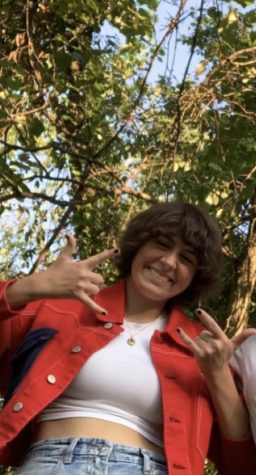Where have all the artists gone?
January 24, 2023
 Artists are going into extinction. When I say this, I’m usually met with responses that all come down to: “Don’t be so dramatic.” But as much as no one wants to admit it, it’s true. The world’s artist population is worryingly low, and the numbers don’t seem to be going back up.
Artists are going into extinction. When I say this, I’m usually met with responses that all come down to: “Don’t be so dramatic.” But as much as no one wants to admit it, it’s true. The world’s artist population is worryingly low, and the numbers don’t seem to be going back up.
This isn’t all coming from nowhere, either. In 2020, the number of humanities degrees awarded dropped by 25%, and you can see it in everything.
Think about the last time you went to the movies. We’re living in an age of sequels, prequels, and remakes. Sure, there’s still content, but none of it is new or creative. What about the bookstore? It seems every novel is a rigid combination of as many popular tropes as possible. Even music has started to get boring, the same overplayed concepts constantly taking up space on the radio. I take these as some of the many effects of the rapidly declining number of artists.
To put it bluntly, there’s a lack of heart in our art. I think about all of the wasted potential in recent Pixar movies when a lack of artistry in media comes to mind. Pixar, who twenty— even ten— years ago were breaking down the boundaries of what makes a good animated movie. They saw a formula in past movies, and did the exact opposite. And people loved it. Now their movies fit a new mold, repeating essentially the same three ideas over and over again. Pixar has lost sight of why they even wanted to make movies: to make something creative and different.
So why have we given up putting feeling into art and focused on engineering the “perfect piece”? The lack of artists certainly isn’t helping, but I would argue that through social push against humanities studies and risk taking, our media has gone dull.
Looking at Norwin alone, there is an overwhelming support for STEM and a clear lack of it for the arts. Everyone and their brother has been told (or in some cases, pressured) at some time or other to go into engineering or another science-y career. STEM is encouraged and the humanities are undervalued— not just at Norwin, but almost everywhere.
We’ve all heard the “starving artist” narrative. No one wants to go into a dying field to drown in the ever-growing student loan debt. STEM is considered the safer option, the tangible option, the one that parents can brag about on Facebook. What are you supposed to tell your friends if your kid is a painter? A writer? A singer? Somehow, art related career titles get lost in translation, and all anyone can hear is “unemployed.” So parents tell their kids not to go into the arts, and teachers tell their students to consider a career in STEM, and artists turn their passions into hobbies.
Good writers stop writing, good painters stop painting, and good performers stop performing; passionate people stop doing impassioned things, and nearly anyone who dares to make art steers away from heartfilled work and turns to the socially engineered piece that is supposed to be perfect. Instead of being a hit, our media becomes stale. Money and security win out over creativity again and again because it’s the “safe” option, just like STEM is supposed to be.
But the safe option is never going to live up to the risk. Top Gun will always beat its sequel, and the song “abcdefu“ can be nominated for a Grammy, but it won’t win song of the year— that’s just a fact. You can’t science your way through art, you have to feel it. The “perfect piece” is one that comes from authenticity, and the few remaining outliers prove it.
Amongst a sea of safe projects, the 2022 movie Everything Everywhere All at Once was messy, complicated, emotional, and got 4.4 out of 5 stars with glowing audience reviews to match. It wasn’t engineered for what people are supposed to love, but they loved it anyway; they loved it because of that. It was genuine, it was art. There are other pieces out there like it,— movies and songs and books and drawings that are made with passion— they’re just greatly outnumbered.
I’ll admit it, humanity needs STEM. But it needs art too. It’s in our blood; art is what makes life worth living. People don’t want the “science” of art, they just want the art. So unless everyone is excited for an 11th The Fast and the Furious movie, we need to stop squashing artists and their risk.



A. Sweitzer • Jan 25, 2023 at 8:43 am
Excellent article Tokay!!!! I love it so so much. You are such a talented writer dude. As always, my favorite writer does an amazing job. :))